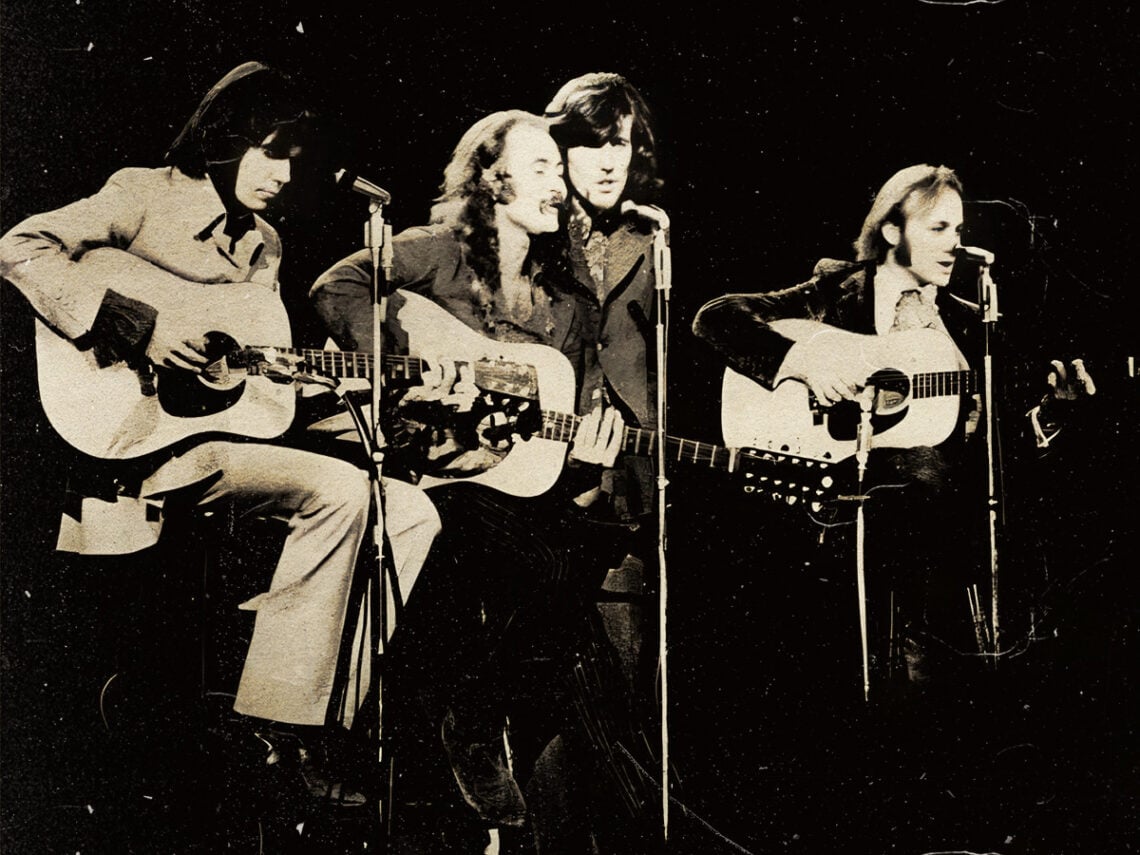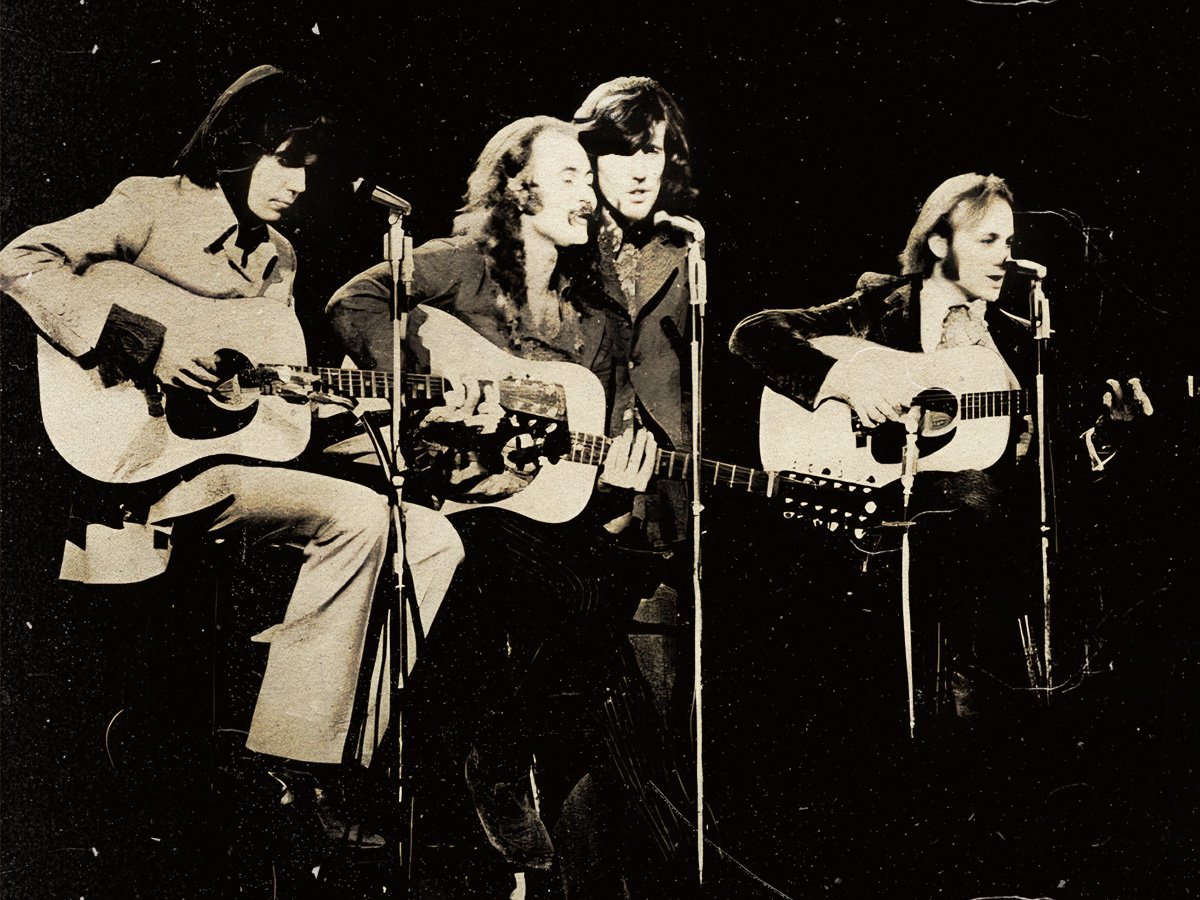
(Credits: Far Out / CMA-Creative Management Associates / Atlantic Records)
Choosing the right album opener is a delicate game in the music industry. Some take it more seriously than others, with the understanding that the right opener can be the difference between listeners opting out at the first hurdle and remaining engaged for the long haul. For one CSNY album in particular, everything seemed frayed at the edges until Stephen Stills seemingly delivered magic at the eleventh hour.
In the beginning, a convergence like the one with David Crosby, Stephen Stills, Graham Nash, and Neil Young seemed like a dream in the music world. That’s because, in many ways, it was, with each complementing the broader project in individual ways to create something that always felt inexplicably powerful, even in its own fragility. However, as with many groups, tensions were inevitable.
Throughout Déjà Vu, it became a struggle to keep everyone together, physically and artistically. While Stills often grew frustrated over who had greater control, Young became something of a loose cannon, sometimes disappearing without a trace or detaching himself in ways the others hadn’t expected. Crosby also struggled with maintaining control alongside navigating the grief of recently losing his girlfriend in a way that made him feel “completely unable to deal with it at all”.
Perhaps this is why Stills once likened the entire recording process to “pulling teeth”, not just because they seemed to be losing track of their previous musical alignment but because the whole thing suddenly felt overwhelmingly dark, tainted by the trials and tribulations of their private lives in a way that threatened to deconstruct the entire operation. These tensions lead to disagreements and fallouts, often at the expense of the material itself.
However, the opener, ‘Carry On’, came at a pivotal moment not only in its themes of perseverance but in pulling the whole record together when everything felt on the precipice of falling apart. As drummer Dallas Taylor recalled, the song was like “a message to the group” because “it had become a real struggle to keep the band together”. He also recalled Stills combining two unfinished songs for the track, an idea he took to Nash, who was enthralled.
The idea also came from a comment Nash made about songs that are so good they prevent people from changing the record. As a result, Stills wanted an impactful opener that made people stay for the rest of the journey. He recalled to Mojo: “I went back to my room in this horrifying hotel and the next morning I knocked on Graham’s door and said, ‘OK, how’s this?’ And I played him ‘Carry On’ and he went nuts. So we got everybody together in the studio and recorded it.”
Evidently, the song was the missing piece to the puzzle that made everything else suddenly make sense. CSNY might have been a sinking ship by that point, but ‘Carry On’ served as the much-needed glue that helped them over the finish line. It also pushed them to momentarily refocus on the music and the impact of delicately constructing a story and emotional journey from the beginning, starting on a message of hope—something they often forgot to exercise amid the broader friction.
Related Topics
Subscribe To The Far Out Newsletter
